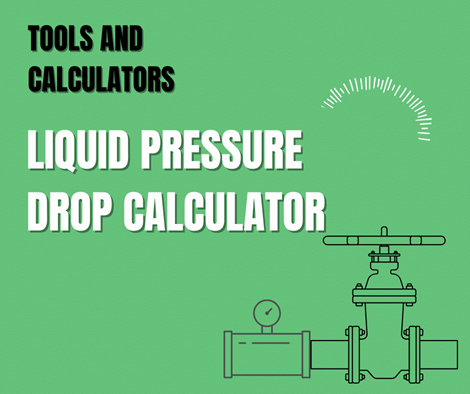
Fluid Properties
Piping System
Fittings
Field Instrumentation
Calculation Results
Reynolds Number:
Friction Factor:
Pressure Drop (Pipe): Pa
Pressure Drop (Fittings): Pa
Pressure Drop (Instrumentation): Pa
Total Pressure Drop: Pa
Understanding the Core Principles
The calculator is fundamentally built upon the Darcy-Weisbach equation, a cornerstone of fluid dynamics for determining frictional pressure loss in a pipe. The equation is expressed as:
ΔP pipe=f DL/2*ρv/2
where:
- ΔP_pipe is the pressure drop due to pipe friction
- f is the Darcy friction factor
- L is the pipe length
- D is the pipe inner diameter
- ρ (rho) is the fluid density
- v is the fluid velocity
The friction factor, f ,is acomplex variable dependent on the Reynolds number( Re) and the relative roughness of the pipe. The calculator automatically determines the flow regime (laminar or turbulent) based on the Reynolds number and utilizes the appropriate friction factor correlation.
Accounting for Fittings and Instrumentation
Beyond straight pipe losses, the calculator integrates methods for quantifying pressure drops across various fittings and field instrumentation, which often contribute significantly to the total system pressure loss.
For fittings such as elbows, tees, and valves, the pressure drop is calculated using the K-factor method:
ΔPfittings=∑K2ρv/2
Here, K represents the resistance coefficient of each fitting, a value that is empirically determined.
For field instrumentation, the calculator provides modules for:
- Orifice Plates: Pressure drop across an orifice plate, a common flow measurement device, is calculated based on the orifice diameter and the flow coefficient.
- Control Valves: For control valves, the pressure drop is determined using the valve’s flow coefficient (C_v or K_v), which is a measure of its capacity.
